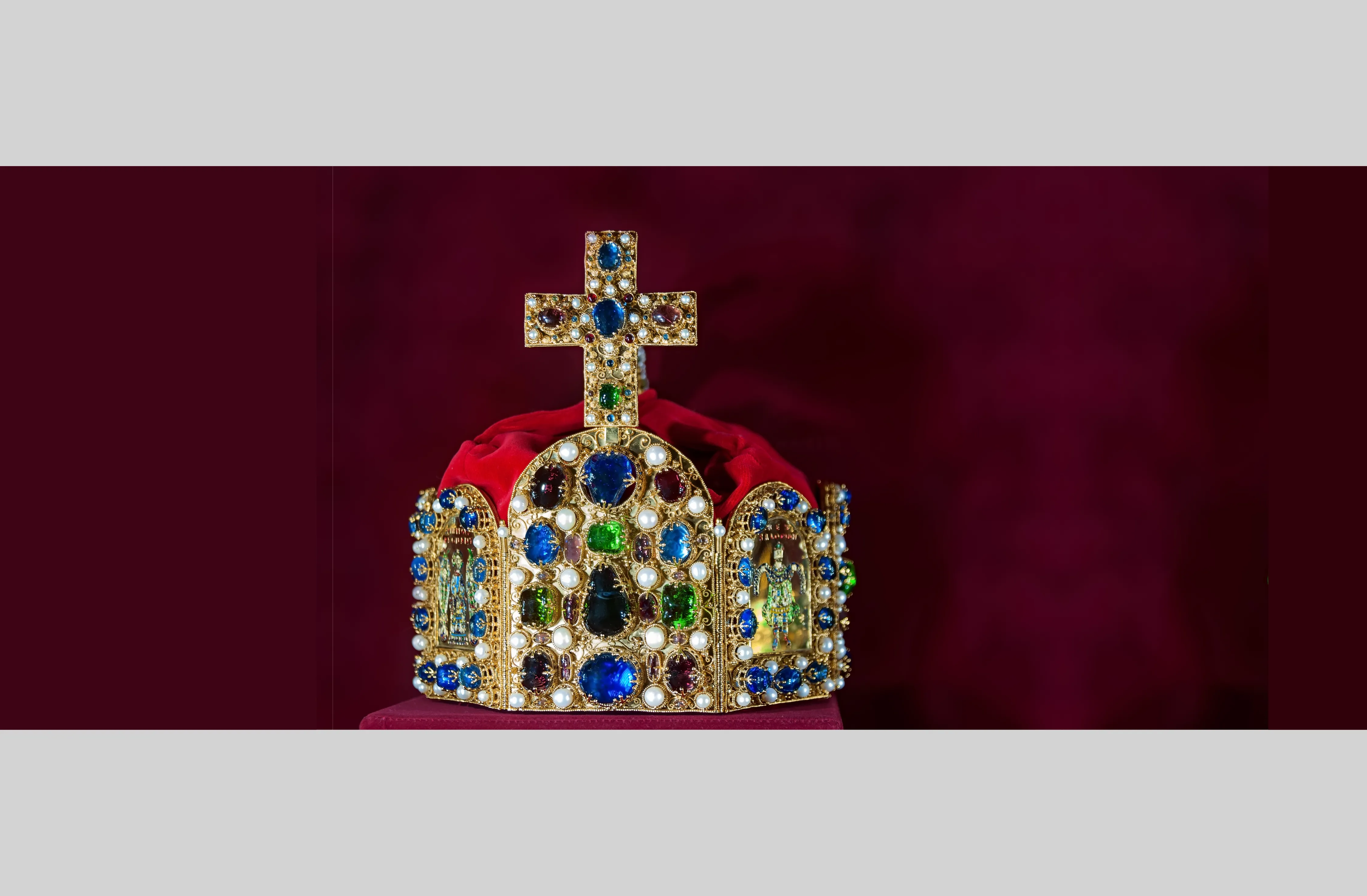
Sharing the CROWN - Establishing a Workflow from Collection Data to Linked Research Data
- Hosting organisations
- KHM-Museumsverband and Zentrum für Informationsmodellierung - Austrian Centre for Digital Humanities (ZIM-ACDH)
- Responsible persons
- Martina Griesser and Christopher Pollin
- Start
- End
Project lead: Martina Grießer
Institution: KHM-Museumsverband, scientific institution under public law
Project duration: 01.04.2023 – 31.03.2024
The Imperial Crown of the Holy Roman Empire is one of the most important symbols of European history. Today it is part of the collections of the Kunsthistorisches Museum in Vienna (KHM). In the course of the so-called CROWN project initiated by the KHM, a comprehensive analysis of the Imperial Crown is being carried out. For this purpose, all components like gems, pearls, plates, etc. will be analysed from a scientific, historical and art-historical point of view. This project, which is currently running until 2024, is thus a truly interdisciplinary endeavour. Research data resulting from the application of highly sophisticated analytical techniques to study manufacturing techniques and materials used, is recorded using The Museum System (TMS). TMS is a widely used software solution designed for museums. It provides a relational database that can be used for inventorying, documenting, and managing collections.
The CROWN project is faced with an in-depth and complex analysis of a single object. It must fulfil the scientific mandate of a world leading museum and has to be based on the already established TMS for data management. Therefore, it is necessary to implement newly developed workflows in the CROWN project using TMS. Concerning data processing this is a flagship project within the KHM-Museumsverband. It is no longer “usual” collection data that needs to be recorded and managed, but highly specific research data that requires special modelling and representation. As specific expertise is not available at the KHM, the proposed project is performed in cooperation with the Institute Centre for Information Modelling, University of Graz (ZIM).
To be usable also for future research, the proposed project is not to develop a ready-made software, but to describe a workflow of a best practice solution to create highly complex, formalised and linked research data in the context of museums according to the FAIR criteria. For this reason, the tools used, TMS or GAMS (Geisteswissenschaftliches Asset Management System), are exchangeable, and the workflows developed are transferable to other existing systems.
Main Goal
The objective of the proposed project is to develop and implement a best practice workflow for modelling, transforming, and publishing data from tools like TMS into FAIR research data. Such a workflow does not include “usual” collection data, but goes far beyond that. This is due to the highly specific research domains in the museum context for which there are insufficient templates for acquisition and standardisation.
In the case of CROWN, the relevant research question, i.e. origin and dating of the crown, can only be answered on the basis of a large volume of interdisciplinary investigations and findings. These in turn, i.e. the connection of scientific measurements with historical findings, go beyond the usual structure of data describing objects in collections. In order to formally represent both the model and entities in the data set, a Semantic Web approach is chosen. The RDF data thus generated is based on a domain-specific ontology derived from CIDOC-CRM and Basic Formal Ontology (BFO), linking its entities to controlled vocabularies and Wikidata. Finally, a web-based proof-of-concept prototype of a user interface adapted to the requirements of the different disciplines involved is developed for the domain described, enabling aggregation, visualisation, exploration and analysis of the processed data.
keywords: museums, semantic web, linked open data, ontology, interdisciplinary research, research data, workflows
(intermediary) Outcomes
The current status of the project and all relevant documents are in the “work in progress” stage and are published in the following GitHub repo, where the Best_Pratices workflows are also made available: https://github.com/DigitalHumanitiesCraft/crown.
- Data cleansing: Data cleansing is an essential step to create a solid foundation for further data processing.
- CSV export to RDF: The project has developed best practices to convert CSV exports from TMS to RDF, including semantic enrichment and normalisation.
- Python scripts and ontology: The repository contains Python scripts for generating RDF data corresponding to the ontology “crown-ontology.ttl”. This ontology serves as a domain-specific model for describing the research data. A derivation of CIDOC CRM is still pending.
- Semantic enrichment and reconciliation: Semantic enrichment and reconciliation were successfully implemented for specific areas such as “colours”.
- Mapping of user fields: The project uses its own mapping file to cover project-specific “user fields” in which the RDF property paths are defined.
Prototype in GAMS (Geisteswissenschaftliches Asset Management System): The aim is to publish a prototype on GAMS. A first version of the unpublished test instance is already available and includes:
- A sample for single object representation (RDF): https://gams-staging.uni-graz.at/archive/objects/o:crown.object.a_max_example_test/methods/sdef:Ontology/get
- Object overview: https://gams-staging.uni-graz.at/archive/objects/query:crown.context-objects/methods/sdef:Query/get
- A sample for displaying a project-specific thesaurus (SKOS): https://gams-staging.uni-graz.at/archive/objects/o:crown.thesaurus/methods/sdef:SKOS/get
- Full text search and filter functionalities